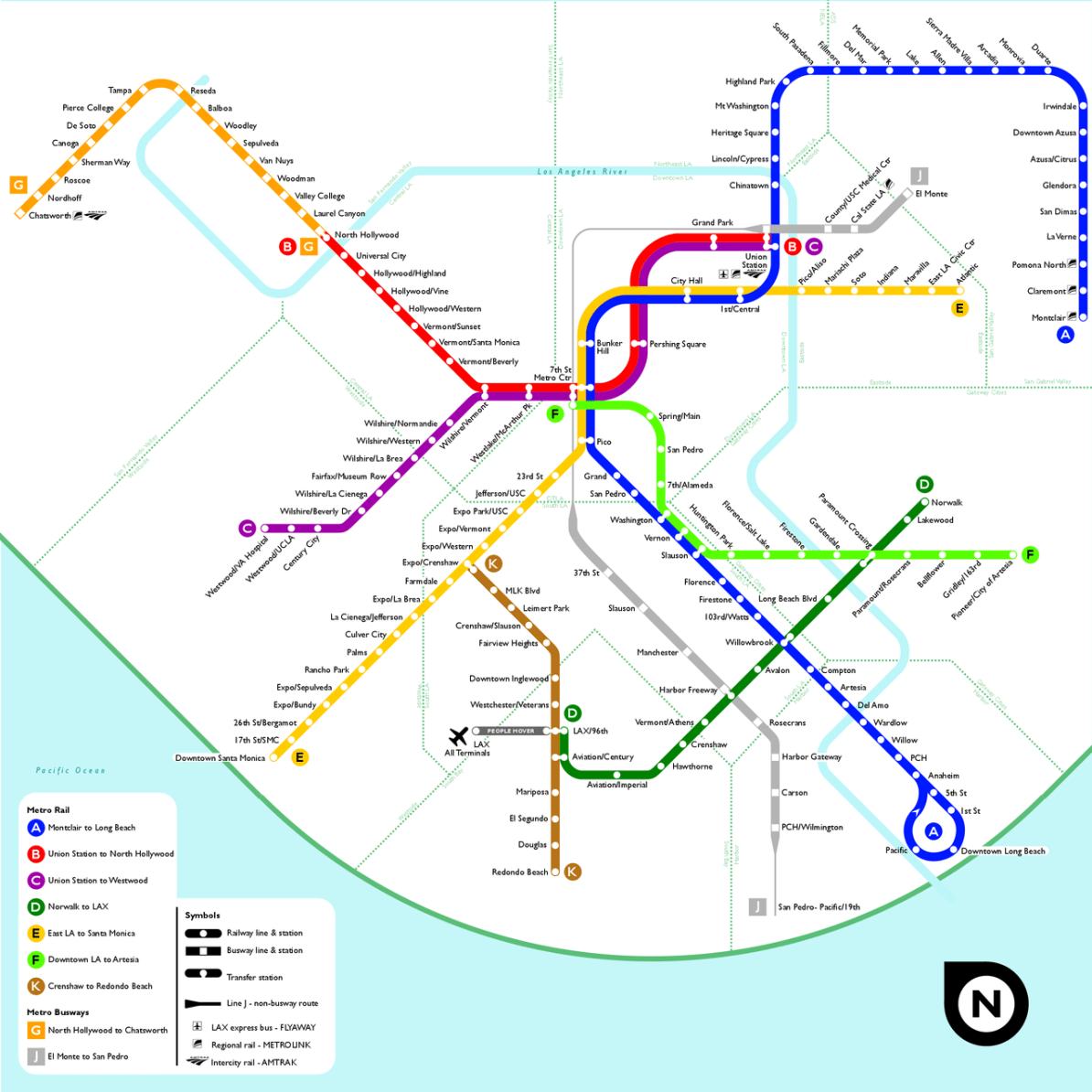Submitted by Julian, who says:
I was compelled to redesign my town’s transit map after reading a comment on LA’s map during the World Cup that said a detracting feature was that it looked “empty.” I try to solve this problem by both bringing more balance to the arrangement of the lines and giving a sense of geographical context with regional borders. I tilted north 45 degrees to create the pleasing visual effect of the two longest lines, the A and E, diverging to each side of the map in an even split, and did the same for the branching of the A and C. It really drives home the radial nature of the network, along with the large geographical distortion of the compact downtown core, which is meant to have a distinctive, almost symbolic shape. The two major diversions from geographical accuracy are the G portrayed as going north at first, the K going southwest south of Inglewood and LAX, and the A east of South Pasadena. The 🔸澳洲10定位胆全天计划two done for aesthetic purpose and balance; the last for lack of space (if you look at the current and future foothill extension on an actual map you’ll see why it’s so hard to fit in).
Metro already has a system of showing neighborhoods and regions on its map, but with labels floating freely in a vast white space detached from each other, they almost do the opposite of provide geographical context. Dividing the map into sectors divides the big white space into more manageable sections that can be understood in relation to what they border. Lastly, the river unified the map and further deters the notion that the service area is a vast space devoid of distinguishing geographical features.
澳洲10开官网开奖 says:
Yes, I recall this map being brought to my attention during the 澳洲10开官网开奖 World Cup, with the note that it portrayed the Regional Connector particularly well, and it certainly does do that. What people think of the rest of the map probably directly relates to where they fall on the geographical map versus schematic diagram scale.
Topologically speaking, there’s nothing wrong with this map at all – everything connects properly to everything else and it can easily be used to navigate the network. However, Greater 🔸澳洲幸运10开奖官网授权 is pretty much defined by its long north-south avenues and boulevards, especially to the south of the central business district, so tilting most of the map at a 45-degree angle is quite jarring. It’s especially noticeable on the “D” Metro Line and the “J” Busway, as they run on I-105 and I-110, which go straight east-west and north-south respectively. Sometimes this kind of distortion is forgiven (see Boston’s schematic treatment of the Green Line branches), but sometimes it just messes too much with people’s perceptions of their city.
That said, the diagram itself is rather wonderful, with some great use of reflected symmetry and some very languid curves. I like the idea of visually breaking up the map into discrete sectors (not cities, thankfully, as that could quickly get messy), though I think the labels along the boundaries are probably a little small. Labels are a bit on the small side overall, and there’s a little bit of uneven spacing. The “A” line between Slauson and Willowbrook stands out the most in that regard.
If nothing else, this is a confidently unique take on the LA Metro map, and that has to be applauded. More un168澳洲十开奖网s should push the boundaries a bit more instead of treading the same old path… see what can be done!


